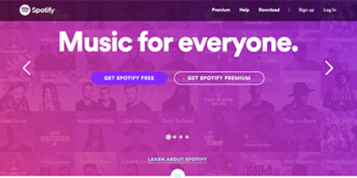Appetite for apps keeps on growing
As consumers we can’t get enough of mobile apps. So much so, that according to ComScore four out of every five minutes we spend on our mobiles is actually spent on apps. They’re now our preferred way of consuming digital content – 85 per cent of us prefer using mobile apps over the corresponding website. And they are often free, or at least fairly inexpensive.
No surprise then, that apps are now big business, with brands of all sizes trying to replicate those must-have apps we download to each new device. Some brands are starting to drive real value and engagement via their mobile apps and many are investing in a new marketing toolset – mobile CRM (m-CRM) – precisely to track their app data and manage engagement, acquisition or monetisation campaigns.
Realising the value of mobile apps
The starting point for driving value is to define your objectives. It’s not just about creating an app and getting people to install it. Brands need to be clear on what the app is designed to do. It needs to satisfy their users’ needs – for easily accessible ‘snackable’ information, services and entertainment on the go – but also serve the brand’s needs. It should enable better understanding by providing data to help build loyalty, drive sales, generate additional revenue or create engagement and brand touchpoints.
A mobile app can be an incredibly powerful way of serving both these objectives. But, many are yet to understand this and the added value their mobile apps can give them compared to a responsive or mobile website.
5 tips for mobile app success
So how do you set yourself up for app success using m-CRM?
1. Know your user – First brands need to really understand how people are using their app. That means looking at their in-app behaviour, such as click through rates, responding to an offer or proceeding to purchase and how they react to push notifications. Together with duration and frequency stats, these measures can also give an indication of tolerance to different interactions and when too much communication can push individual app-users to disengaging. With the right suite of m-CRM tools it’s not difficult to obtain this data, for further analysis and segmentation to drive insights for the next steps.
2. Engage your user – Once you know them and have segmented them, then you can start targeting different user messages and track their engagement level. True customer engagement isn’t about reaching a huge audience, it’s about reaching the right audience on their terms and driving desired actions from them. To this end, we’ve developed a specific KPI around engagement called the Mobile Media Index which looks a number of measures to enable brands to quickly assess the impact of their mobile marketing messages and how responsive app-users are to them.
3. Retain and convert them – Specific KPIs are also needed around retention and conversion. Do you want to drive your audience to purchase? Get them to engage more deeply by participating in an activity or registering for further information? Apps are more successful when they deliver personalised touch points and communications with a brand. Using m-CRM to engage app users in real time with rich content, from offers and discounts to service updates, via push notifications is one way of doing this.
4. Acquire new users – Once the first three steps have been mastered, the next is obviously the tried and tested route of acquiring the more of the same. But here again, m-CRM tools can help you to track and manage the results and ROI of your investments. For instance, by telling you which of your apps should you invest in for optimised results and brand safety.
5. Monetise the audience – As your app reaches a certain volume of users, or has a level of users that have been qualified, it’s possible with m-CRM to monetise the audience of your app and generate additional revenues by allowing a complementary brand to send a push notification to your users. As ever, setting some KPIs is essential. Going purely for revenue can risk losing an audience because of heavy advertising pressure. Think also about which format, what sort of content and frequency is ideal. What brand partnerships do you accept or refuse? Tempting though it may be to boost turnover, front of mind here must always be whether the monetising strategy is enriching your brand positioning.
Following these steps will go a long way to setting you up for success, enabling you to properly realise the value of mobile apps using m-CRM. With mobile apps on the rise, the most advanced companies are already connecting their mobile CRM to their other databases or data management platform to generate more ever personalised and multi-channel communications.






